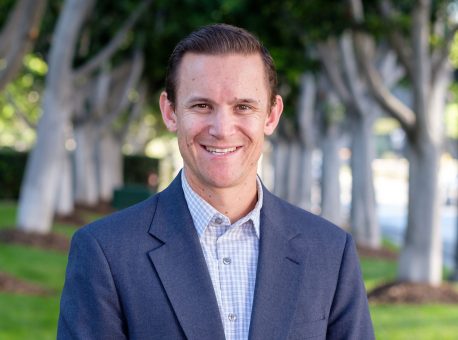Ben Seager & 810 Pine Ave. – Assisted Living Evolves Along With Its Residents
Seniors Housing Business
September 12, 2018
Residents are older and frailer, and providers are responding with a different kind of product. Here are four dramatic changes.
The assisted living building boom of the 1990s has a lot in common with today’s recent wave of new construction. Developers have access to capital, and developers break ground daily, even amid rising concerns about the oversupply of assisted living units.
But that’s where many of the similarities end.
Today’s model of assisted living is quite different from the one that flourished 25 years ago. The residents are different and so are their adult children, the ones who often make the housing decisions. Healthcare is fast becoming a standard offering. Programming is more varied and the buildings themselves have evolved into something more contemporary and user-friendly.
The product changes also come amid a tumultuous period for the industry. The stock prices of publicly traded companies are under pressure. Occupancies are falling as new supply outpaces demand. Wages and expenses continue to increase while the average length of stay of residents is declining.
What follows are four dramatic changes in assisted living, along with insights into where the sector might be headed next.
1 Residents are older
The average age of an assisted living resident is 87, according to Argentum, the assisted living industry association based in Alexandria, Virginia. In 2006, the average age was 85, according to a report in the journal The Gerontologist. (Statistics on the average age of residents in the 1990s are not available.) In short, the age at which seniors move into seniors housing is rising.
The advancing age of residents has broad implications for the sector. When Chris Bird first started working in the industry 23 years ago at a property in Memphis, the average age of residents at the independent living building that also offered what was called supportive care was approximately 80 years old.
He now works at LCS, a large provider with 40 rental communities, as executive vice president of the company’s rental business. Bird figures the average age of residents in the LCS portfolio is about 84. He expects the average age of LCS residents to hit 86 or 87 in a few years.
“People are living longer,” says Bird, whose office is at the LCS headquarters in Des Moines, Iowa.
New residents are not only older, but they also often arrive with more chronic medical conditions than assisted living residents of the past. “Operators have to morph with the needs of the customer,” says Bird.
Others agree. The average age of residents has ticked up two to three years in the last five years, according to Ben Burke, president of Chicago-based CA Senior Living, which has 21 buildings that are either open or under construction. Burke, who is based in the firm’s Denver office, adds that today’s residents are frailer than they were 10 years ago, which is changing the assisted living product.
A move to assisted living is more likely nowadays to be driven by a health crisis, according to Larry Cohen, CEO of Dallas-based Capital Senior Living (NYSE: CSU). The company operates 129 communities, and owns about 64 percent of the units it operates.
In Cohen’s experience, prospective residents 10 years ago toured assisted living properties with their families, put their homes on the market for sale, and then moved in months later after their homes were sold.
Now, he says, it’s not unusual for a new resident to move in the same day the family first contacts the community. The prospective resident may be in the hospital and face an imminent discharge. Or some incident, such as a fall, may trigger the need for a fast move.
“The move-in time is quick,” says Cohen. “We are solving an immediate problem for someone in many cases.”
Responding to the fact that residents are older and frailer, and to keep residents from moving to another facility, Capital Senior Living has converted about 1,300 independent living units to assisted living and memory care units since 2015.
The number of the company’s residents in independent living has dropped from about 70 percent to 40 percent of its population over the last five years. “We are meeting the needs of our residents,” says Cohen, who recently announced that he will retire at the end of the year.
Consumers are more educated about assisted living than they were 20 years ago, according to providers. They are familiar with assisted living and what it offers. Even if it’s their first encounter with the product, they likely have friends and relatives who have told them about their experiences with assisted living.
Seniors and their adult children have become savvy shoppers, too. They ask a lot of questions.
Adult children expect the assisted living facility to provide the needed care, as well as engaging programs and activities. They want to know what their parent will be doing during the day. “Adult children want their parents to have a full life,” says Maria Oliva, COO at Pathway to Living.
The Chicago-based company operates 25 properties and has three more under development. Pathway owns 21 of the buildings; the others are owned in joint-
venture partnerships.
Also, consumers are looking for a place that can provide care options as the senior’s health or capabilities decline further. “The family does not want to move their loved one again,” says Oliva.
The industry has responded by building more properties with some type of continuum of care, adding memory care units and access to more healthcare services.
2 On-site healthcare a must
A common quip heard at industry meetings is that today’s assisted living is more like the skilled nursing of the past. In other words, more and more healthcare is provided in assisted living settings.
“Assisted living communities must have a robust healthcare infrastructure,” says Oliva.
A growing number of assisted living buildings have licensed nurses available 24/7. Doctors and other healthcare providers make regular visits to the buildings. Providers track health outcomes to keep residents out of the hospital. Assisted living providers are switching to electronic health records and integrating their records with healthcare providers.
Older and frailer seniors benefit from on-site healthcare. It can be difficult to get to a doctor’s appointment at an outside office. A relative may not be available to help. On-site services are also a way for providers to keep residents healthy and extend their length of stay.
Bird of LCS explains that assisted living operators are seeking ways to keep residents healthy and in place to prevent them from moving to another facility, such as a nursing home that provides more healthcare. “Everyone is looking to close the back door,” says Bird.
A year ago, LCS introduced a “healthcare navigator” program. Each community has a dedicated navigator who coordinates healthcare services for the resident both within the community and with outside providers. This includes any transitions the resident may make from one care setting to another.
For example, a resident may have been hospitalized followed by a stay at a rehab facility. The healthcare navigator works with the case manager or social workers at the hospital and rehab facility to make sure the transitions back and forth are smooth, and that the resident gets the services he or she needs.
The healthcare navigator can also help sort out details like long-term-care insurance claims. The navigator is that middle person who steps in to guide the process, says Bird. “It gives the customers a little relief so they don’t have to worry about the details.”
The navigator’s services are included in the monthly fee — residents don’t pay extra for the service. “It gives us a competitive edge and meets the needs of our customers,” says Bird.
Does the navigator program increase the resident’s length of stay? It’s too soon to tell, says Bird. The program is only a year old and the data is not yet available to determine whether residents are staying longer.
But anecdotally, executive directors believe the program has helped to increase the length of stay, says Bird. Also, the resident and family have someone to help the senior through a health episode.
Capital Senior Living provides a good example of how healthcare has become a focus at assisted living properties.
The company has filled a number of leadership positions with talent from hospitals and post acute care providers. The company has also expanded its quality assurance oversight. Staff nurses complete regular audits of the assisted living buildings, reviewing the staff, procedures and policies.
An internal quality assurance committee holds monthly meetings and quarterly reviews with the company’s board of directors. Morning “safety huddles” with the staff at each building highlight resident safety and wellness.
Home healthcare and therapy providers rent space at Capital Senior Living’s properties, providing residents with on-site access to care. The fall prevention program has been expanded. A flu prevention program, based on hospital protocols, has also been instituted.
Capital Senior Living is finalizing a relationship with a large accountable care organization (ACO) and hospital system, says Cohen. The appropriate patients — ones who might have otherwise been sent to a skilled nursing facility — will be referred to Capital Senior Living properties. The patients will be treated in a more home-like setting and at a lower cost than that of a nursing home.
The arrangement will have several benefits, notes Cohen. A 100-unit building that receives four or five referrals a month increases its occupancy by four to five percentage points. Also, marketing materials will highlight the well-regarded name of the ACO and hospital system, which will reassure consumers that they are receiving good care.
3 New segments emerge
Assisted living is no longer a one-size-fits-all product. Though several different care levels have always been available at communities, now there is more segmentation of the assisted living product based on the needs of the resident.
The most obvious example is the emergence of the memory care segment. Many new assisted living buildings contain a dedicated memory care section since residents with dementia typically need special programming and care.
Residents in the general assisted living population don’t necessarily want to be grouped with those with serious memory problems, say providers.
CA Senior Living will offer a new segment called enhanced assisted living at Quail Park of Lynwood in Lynnwood, Washington, near Seattle. The developer broke ground on a $34 million expansion in late May. It will add 122 units to the property, including independent living and assisted living apartments and independent living cottages. Sixteen units will offer enhanced assisted living, a dedicated wing for those without memory issues who require extra care.
“We see residents with a wider range of acuity levels,” says Burke. The ratio of staffers to residents will be higher in the enhanced section than in the traditional assisted living section.
4 Designs evolve
Assisted living building designs have evolved to accommodate the changing resident population and their preferences. New buildings aim to strike a balance between offering a social and medical model (see sidebar).
More senior-friendly floor plates with easier access to common areas are replacing the long corridors of the past. While studio apartments once dominated assisted living properties, now there are more one- and two-bedroom units, some even with full kitchens.
Big units with full kitchens and in-unit washers and dryers can help attract younger assisted living residents, says CA’s Burke.
Early assisted living building designs gravitated more toward a Victorian style with porches and gingerbread detailing. Older people like old-fashioned buildings, the reasoning went. But modern designs with clean lines are becoming more desirable, especially with adult children.
The overall goal today is to create a homelike environment with a residential scale, says Ben Seager, director of design at KTGY, an architecture firm. Seager is based in KTGY’s office in Irvine, California.
The lobby should feel like a boutique hotel, according to Seager. On the residential floors, redundant corridors running parallel to each other can help maintain the residential feel. The residents use one corridor, while the service staff uses the other for medical carts. That layout minimizes the
hospital-like feel.
The firm’s latest assisted living designs feature two types of amenities. Each residential floor includes small gathering areas, such as cozy living rooms. The large common areas on the first floor are more varied than they were in the past.
Assisted living buildings today include multiple dining venues, such as bistros and casual snack bars. While meals in the past were served three times a day on a schedule, many properties now have on-demand dining. Residents can eat where and when they want.
Activity rooms nowadays tend to be multi-purpose and flexible. For example, they can be used as a chapel or a classroom.
Contemporary designs also consider the needs of the extended family. The building should have comfortable spaces for visitors so they want to come back, says Seager. A community with a retention pond might add a dock for younger kids to fish. “It’s a small thing,” he says. “But the details matter.”
Urban infill projects have become more common as suburban areas have been saturated with buildings. KTGY is handling the design for an urban infill project — 810 Pine Street — in Long Beach, California. The developer is Global Premier Development, an affordable housing developer based in Irvine, California, that is entering the assisted living market.
The property consists of a 10-story historic limestone office building, which has been renovated to accommodate 56 memory care units. Global Premier plans to build another tower next door for assisted living residents.
Because the project is situated on a 15,000-square-foot parcel, the outdoor amenities sit on top of the building. “The top floor is like a really nice backyard,” says Seager. The main floor will include a café, a feature that will appeal to young visitors, he adds.
Creative ideas are solving many of the challenges presented by a changing market. But providers agree the next big issue to shape the assisted living industry will be how to create a more affordable model as the cost of care continues to rise. As Bird of LCS says, “it’s an unanswered question.”



